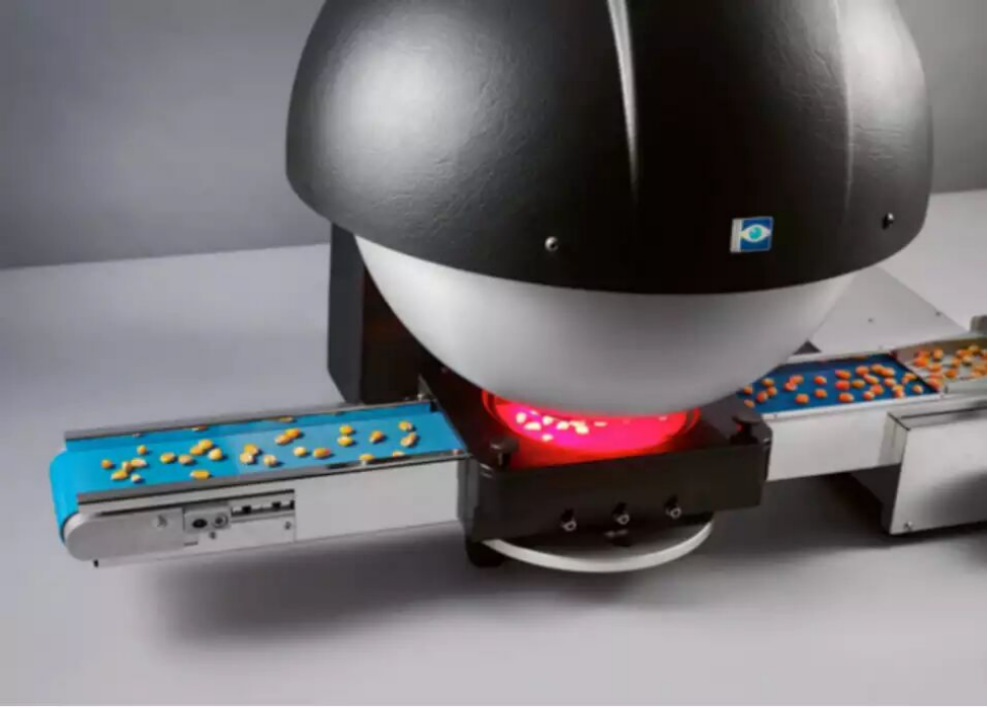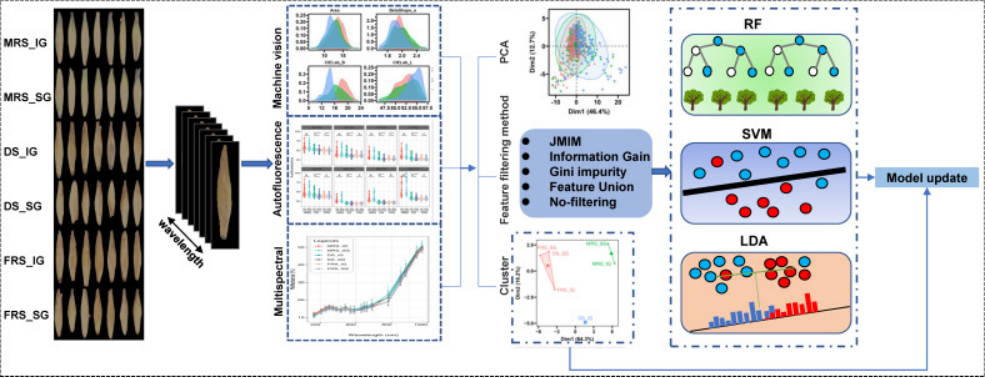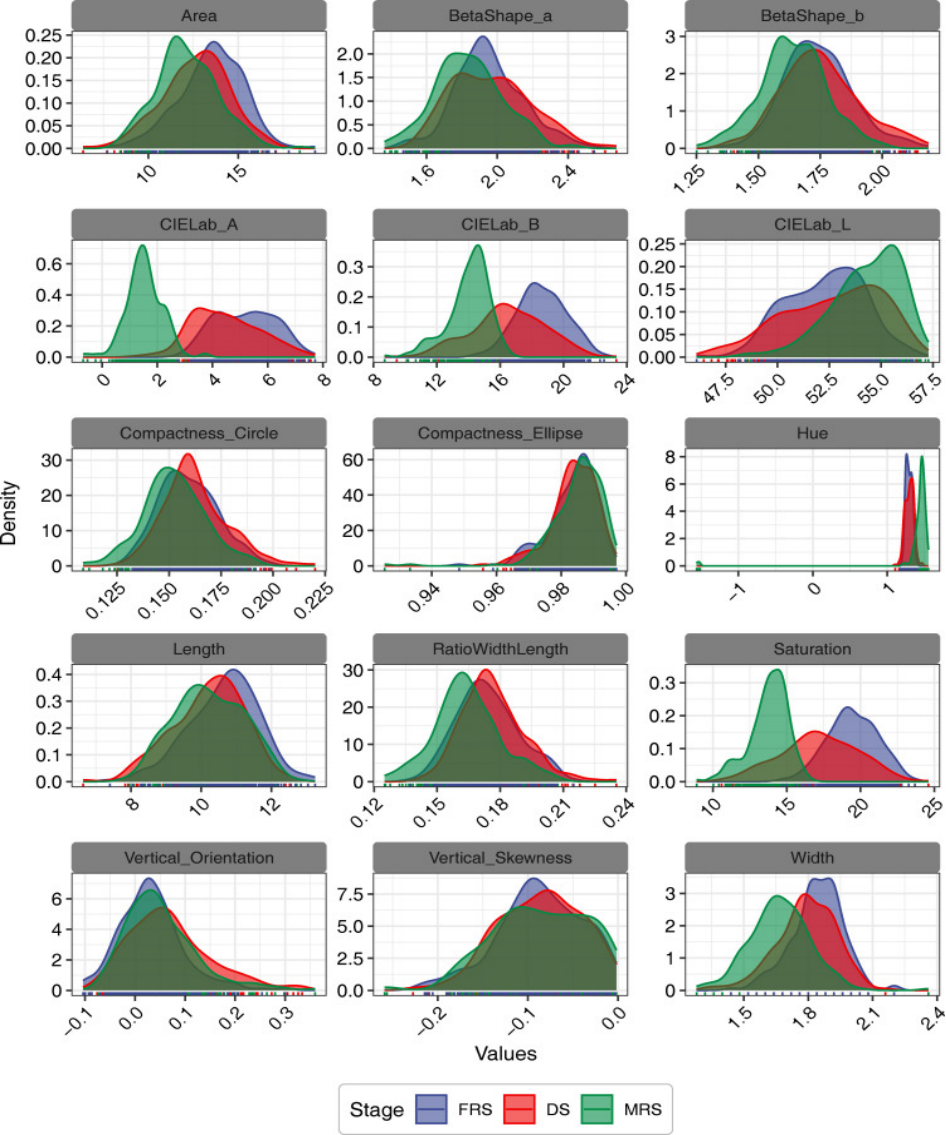品质至上,客户至上,您的满意就是我们的目标
当前位置: 首页 > 新闻动态
科学家利用Videometer多光谱成像系统发表野生燕麦种子成熟度分析文章
发表时间: 点击:1008
来源:北京博普特科技有限公司
分享:
来自中国农业大学的科学家利用Videometer多光谱成像系统在期刊Front Plant Sci. 2023 Apr 20;14:1170947. doi: 10.3389/fpls.2023.1170947.eCollection 2023.发表了题为“Integrating optical imaging techniques for a novel approach to evaluate Siberian wild rye seed maturity”的文章,这是利用该团队利用本系统发表的第7篇文章。

相关文章列表如下
Non-destructive identification of naturally aged alfalfa seeds via multispectral imaging analysis.
Multiple omics datasets reveal significant physical and physiological dormancy in alfalfa hard seeds identified by multispectral imaging analysis.
Non-Destructive Testing of Alfalfa Seed Vigor Based on Multispectral Imaging Technology.
Convolutional neural network-based image recognition of forage seeds. Pratacultural Science,
Integrating optical imaging techniques for a novel approach to evaluate Siberian wild rye seed maturity
Single Seed Identification in Three Medicago Species via Multispectral Imaging Combined with Stacking Ensemble Learning
集成光学成像技术用于评估西伯利亚野生黑麦种子成熟度的新方法
摘要
快速无损方法的光学成像技术的进步提高了种子质量检测的效率。准确地安排收获时间对于最大限度地减少收获过程中的过度破碎,从而最大限度地提高西伯利亚野生黑麦种子的产量至关重要。本研究应用集成光学成像技术和机器学习算法,开发了基于不同成熟阶段和籽粒位置的西伯利亚野生黑麦种子分类模型。形态、多光谱和自发荧光数据的多源融合提供了更全面的信息,但也增加了对设备的性能要求。因此,我们采用了三种滤波算法,即最小联合互信息最大化(JMIM)法、信息增益法和基尼杂质法,并建立了两种控制方法(特征并集和无滤波)来评估仅保留20%的特征对模型性能的影响。JMIM和信息增益都揭示了自发荧光和形态特征(CIELab A、CIELab B、色调和饱和度),这两种滤波算法的运行时间更短。此外,观察到芽长与形态和自发荧光光谱特征之间有很强的相关性。基于线性判别分析(LDA)、随机森林(RF)和支持向量机(SVM)的机器学习模型在对不同成熟阶段的种子进行分类时表现出较高的性能(>0.78的准确率)。此外,研究发现,在成熟阶段,不同的晶粒位置存在相当大的变化,使用K-means方法将模型性能提高了5.8%-9.24%。总之,我们的研究表明,特征滤波算法与机器学习算法相结合,在识别种子成熟度阶段方面具有高性能和低成本,并且针对不一致成熟度应用k-means技术提高了分类精度。因此,该技术可用于西伯利亚野生黑麦种子成熟度和优良生理品质的分类。

关键词:西伯利亚野生黑麦种子;自体荧光成像;特征滤波;集成光学成像;机器学习;模型更新;多光谱成像。


Front Plant Sci. 2023 Apr 20;14:1170947.
doi: 10.3389/fpls.2023.1170947. eCollection 2023.
Integrating optical imaging techniques for a novel approach to evaluate Siberian wild rye seed maturity
Abstract
Advances in optical imaging technology using rapid and non-destructive methods have led to improvements in the efficiency of seed quality detection. Accurately timing the harvest is crucial for maximizing the yield of higher-quality Siberian wild rye seeds by minimizing excessive shattering during harvesting. This research applied integrated optical imaging techniques and machine learning algorithms to develop different models for classifying Siberian wild rye seeds based on different maturity stages and grain positions. The multi-source fusion of morphological, multispectral, and autofluorescence data provided more comprehensive information but also increases the performance requirements of the equipment. Therefore, we employed three filtering algorithms, namely minimal joint mutual information maximization (JMIM), information gain, and Gini impurity, and set up two control methods (feature union and no-filtering) to assess the impact of retaining only 20% of the features on the model performance. Both JMIM and information gain revealed autofluorescence and morphological features (CIELab A, CIELab B, hue and saturation), with these two filtering algorithms showing shorter run times. Furthermore, a strong correlation was observed between shoot length and morphological and autofluorescence spectral features. Machine learning models based on linear discriminant analysis (LDA), random forests (RF) and support vector machines (SVM) showed high performance (>0.78 accuracies) in classifying seeds at different maturity stages. Furthermore, it was found that there was considerable variation in the different grain positions at the maturity stage, and the K-means approach was used to improve the model performance by 5.8%-9.24%. In conclusion, our study demonstrated that feature filtering algorithms combined with machine learning algorithms offer high performance and low cost in identifying seed maturity stages and that the application of k-means techniques for inconsistent maturity improves classification accuracy. Therefore, this technique could be employed classification of seed maturity and superior physiological quality for Siberian wild rye seeds.
Keywords: Siberian wild rye seed; autofluorescence imaging; feature filtering; integrating optical imaging; machine learning; model updating; multispectral imaging.